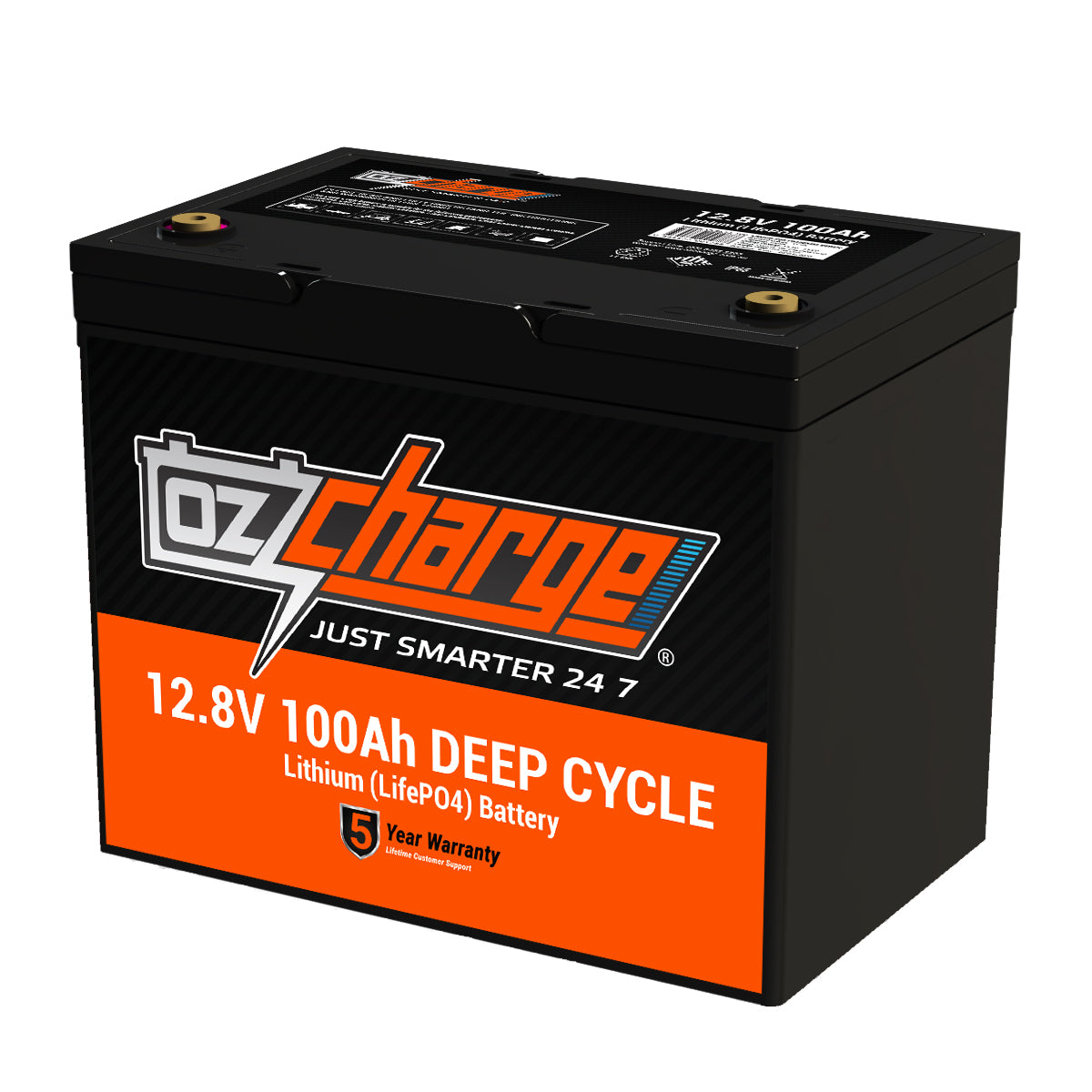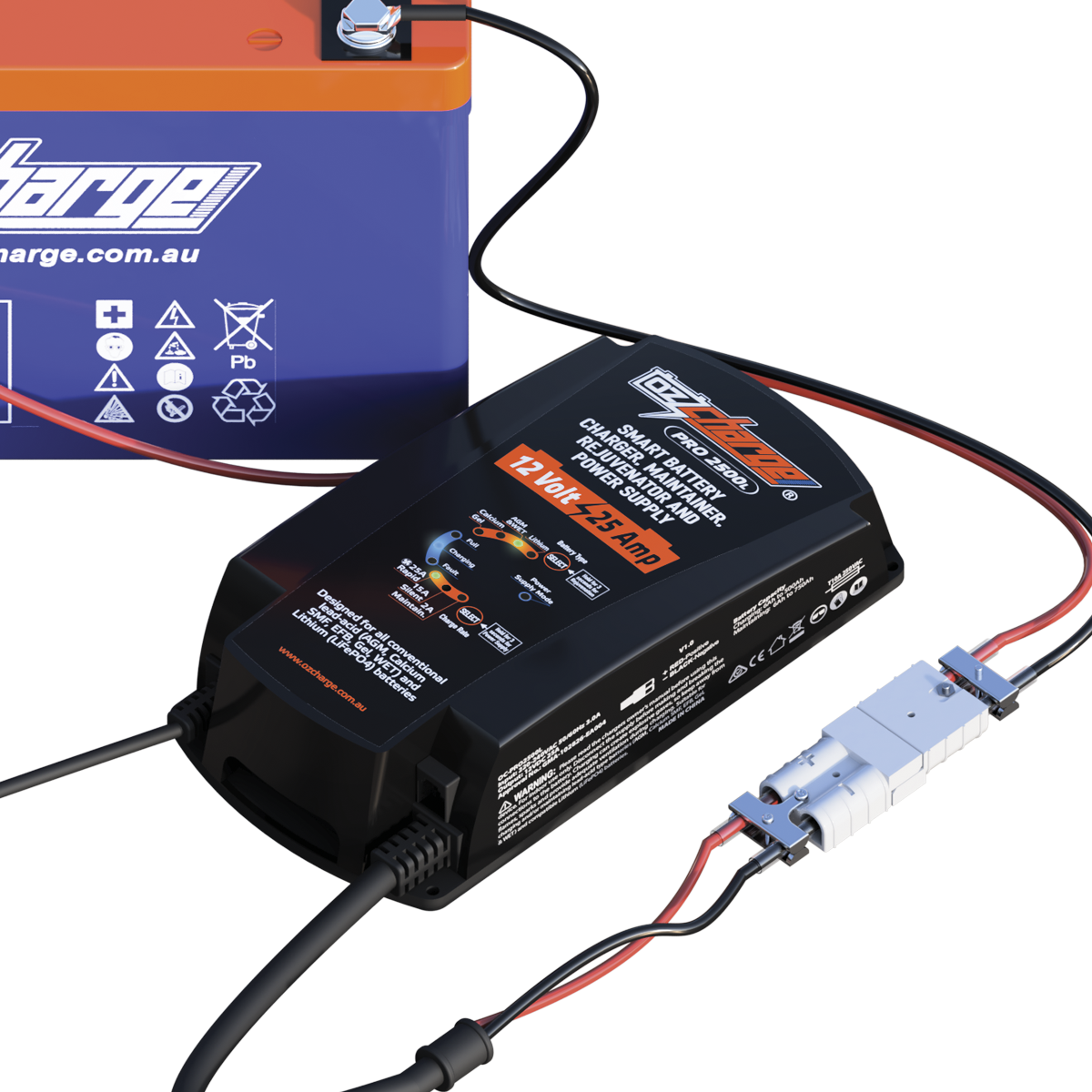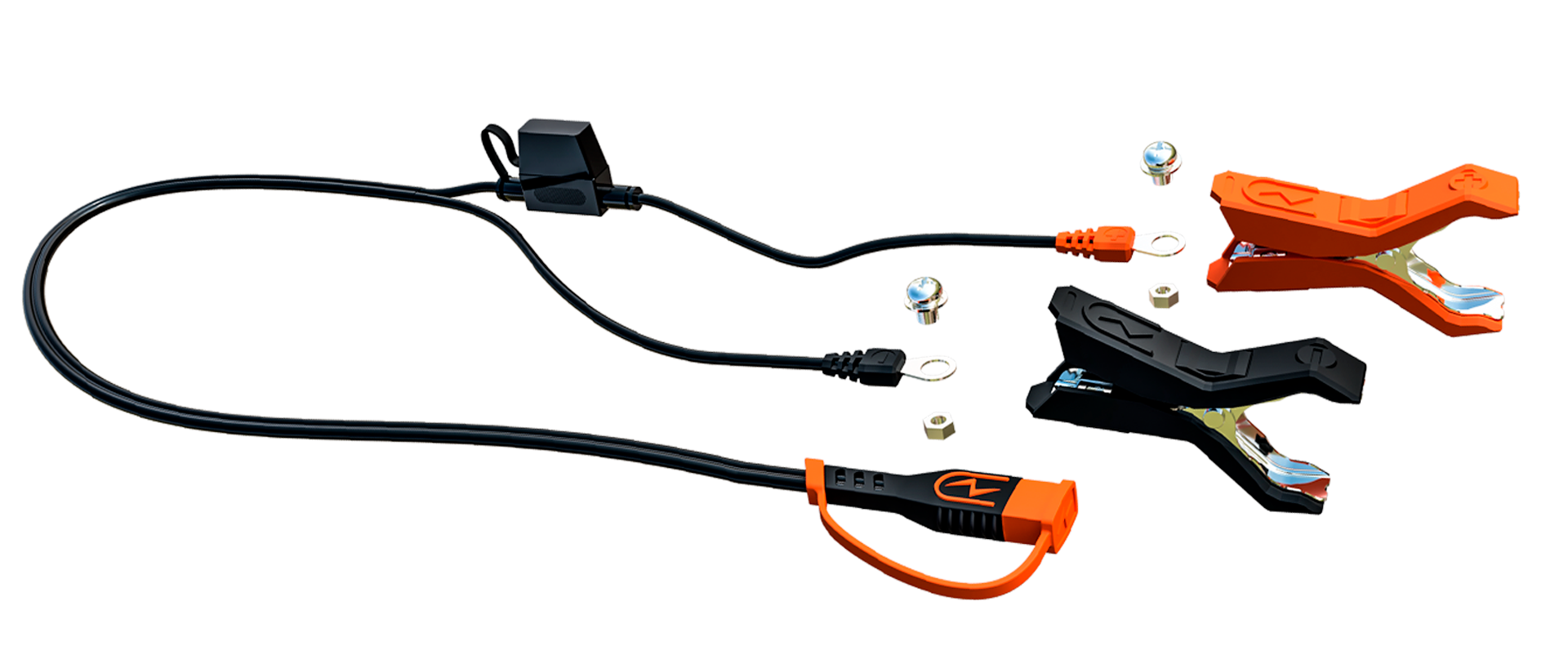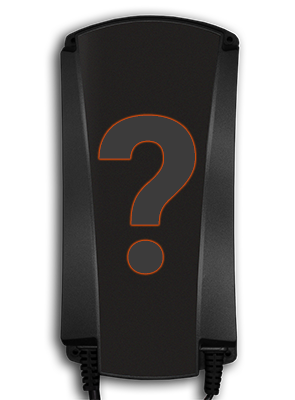by Jason Marshall
Battery chargers can be confusing and we're here to show you how to pick the correct charger for the job.
Step 1 - Identify the battery type
There are many types of batteries but most commonly in an automotive or recreational setting you will find Lithium, AGM (Absorbed Glass Matt), GEL, flooded or wet batteries, maintenance free Calcium batteries and the more modern EFB (Enhanced Flooded Battery) and Automotive AGM found in modern Stop Start vehicles. The type of battery is always clearly displayed on the battery label located on the top or side of the battery.
Most automotive cranking batteries are either flooded (wet) batteries or Calcium maintenance free batteries. Always check, as some modern vehicles have an AGM style Stop/Start cranking battery. It is important to check your charger is suitable for your battery type and select the correct battery chemistry when charging.
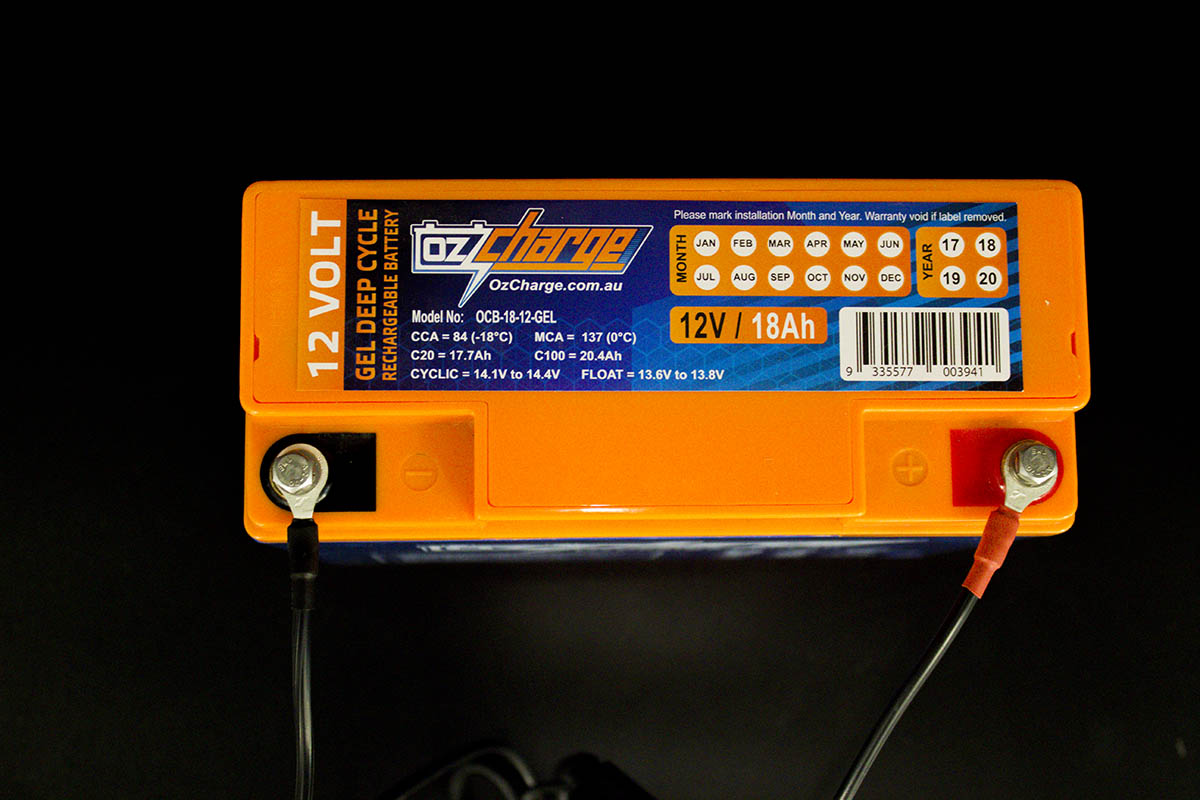
Step 2 - Identify the size of the battery you need to charge
The rating of batteries can be confusing and different rating types are used for different batteries. For example:
- Flooded (Wet) or Calcium are typically rated in Cold Cranking Amps (CCA) and/or Reserve Capacity (RC).
- Lithium, AGM and GEL batteries are typically rated by a “C” Rating
When it comes to charging, we need to determine the Ampere hours (Ah) of the battery. This is a universal number that helps us understand the size or electrical capacity of a battery. On flooded, wet or Calcium batteries such as start batteries the Ah is often not displayed.
Converting CCA to Ah is not that easy. You should always download the manufactures data sheet to check the correct Ah rating. There is an old rule of thumb where you divide 7.25 into the CCA to determine the Ah of the battery but it’s not always an accurate conversion.
Understanding the “C” rating of a battery can help you determine a lot about the Battery. For example, 100Ah rated at C20. Divide the 20 into the 100 gives you 5 amps. This tells us that the battery is designed to discharge 5 amps for 20 hours until is reaches 10.5 Volts (which is the international test benchmark for dead flat).
If the battery label does not indicate the Ah rating, to get an approximate Amp hour (Ah) rating, multiply the Reserve Capacity (RC rating) x 0.6.E.g. 90 RC x 0.6 = 54 Ah.
Note: These details can be found on the battery label located on the top or side of the battery. If you are unable to find this information, please contact your battery manufacturer.

Step 3 - Identify what you need the charger for
Battery charging is when you are recharging a flat or dead battery to full. Battery maintenance on the other hand is when you just want to keep a battery topped up (maintained).
For instance, if you're storing a motorcycle that you only ride a few times a month but want to ensure it's ready to go on a sunny afternoon you would require battery maintenance as opposed to battery charging. This is often referred to as trickle charging. All OzCharge® battery chargers perform both functions and understanding each charger's limits is important.
Lithium batteries require a specific charge at specific voltages and should never be charged by a battery charger that has not specifically been designed to charge lithium batteries. The OzCharge® PRO L series of chargers includes a Lithium charge algorithm.
Step 4 - Selecting a charger size
As a rule of thumb your battery charger should be 10% - 20% of the Ah rating of the battery.
E.g A 100Ah battery would require a 10 Amp charger as a minimum. To prevent overcharging, you should keep the charger size to within 30% of the total capacity.
In the case of a 100Ah battery that would be a maximum of a 30 amp charger. (For Lithium batteries, refer to your battery manufacturers specifications for maximum charge current as this could be anywhere up to 100% of the Ah capacity)
Please keep in mind that most OzCharge® battery chargers have selectable current outputs. This function will allow you to use a larger charger on a small battery by reducing the output current to a safe rating.
Find below a list of our best sellers for range of applications:
 |
 |
 |
 |
 |
Lithium Battery Charger & Maintainer
Motorcycle Battery Charger & Maintainer
Car Battery Charger & Maintainer
On-board Marine Battery Charger & Maintainer
Caravan Battery Charger & Maintainer

